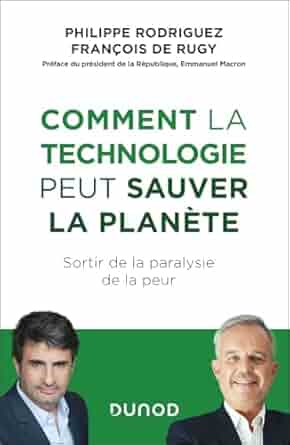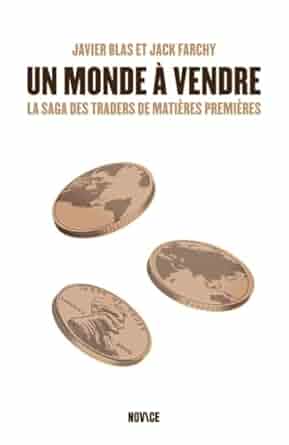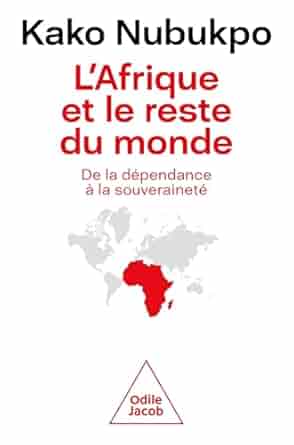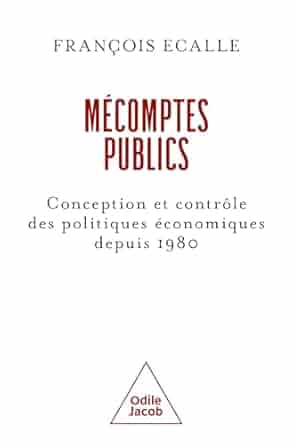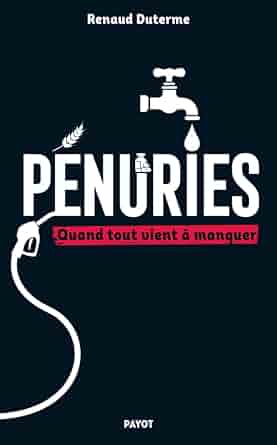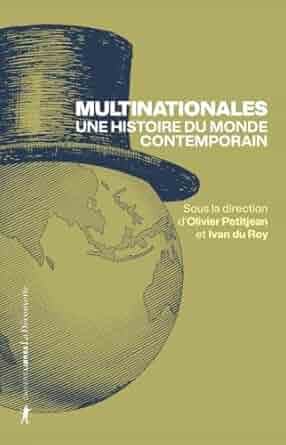The author – PRIX TURGOT 2020 – in his latest work transports us to a new dimension by explaining the paradigm shift that is the loss of the sense of effort. A civilizational rupture is taking place. The effort that was exalted – and which is at the heart of any successful life – is no longer of interest, it is no longer given as an example, and we prefer the egalitarian virtues of humility and passivity. We no longer salute the hero, but the victim. Elitism was a laudatory qualification, we are wary of excellence, the mediocre reassures, we have entered the lazy thirties which will logically lead to a form of economic and political bankruptcy and to a cultural, economic colonization and also to the end of our political model based on democracy because the era of laziness mainly concerns the old countries of the West. Artificial intelligence does not make effort useless, but it changes what is essential to live happily. We cannot rule out the possibility that work will disappear and if the civilization of idleness is confused with that of laziness – which has significant consequences on our material lives – it will lead to the disappearance of the individual. Effort also dies from the profound transformation of our relationship with society because it is no longer necessary to obtain most of the things that yesterday cost so much to acquire. One sometimes has the impression that the essential goal of every citizen is to succeed in capturing the perks of redistribution during working life and retirement. The preference for laziness has spread to all dimensions of society. The extraordinary latitude of choice conferred by prosperity ends up being tiresome, because freed from the burden of hunger, we are less able to bear the other rules that constrain us. The development of modern civilization has changed the rites of integration and the rules of the social game. For millennia, belonging to a group meant conforming, otherwise one was not recognized as a member. We do not negotiate with the rigor of social prescriptions, because existence was precarious and relatively short, suffering and death being omnipresent. One could not be idle; the idleness of the Greek citizen is not considered laziness because it allows a work on oneself beneficial for the community. One did not choose one’s spouse or religion. Degradation is no less formidable than death, since an existence rejected by the group is not really an existence. We must make an essential difference between pre-industrial society and ours. Today, the range of choices to be made in our lives is almost infinite. Effort is no longer the prerequisite for survival. Everyone enjoys a piece of the collective prosperity without having to participate. This opens up a new possibility: doing nothing. And it all starts at school, for the success rates of the patent are boosted by 3 to 6 points according to the academies. The progression of the number of baccalaureate recipients is a sign of its change of function. It has become a ritual of social aggregation. It is up to the institution to adapt rather than to ask students to make an effort. Now, we no longer read because the effort required is too great, we learn by entertaining ourselves via digital means. The effort would not have disappeared if it had not been discriminated against. At the beginning of the 21st century, all the conditions are met for the death knell of the effort, which is no longer the rule but the exception, or rather that it is replaced by the trumpets of laziness, because the progress of industrial and agricultural civilization has been immense. We have access to a standard of living prodigiously superior to that of our ancestors at the cost of a considerably lower effort. We want to consume, but less and less to produce. It is no longer a question of achieving the best possible performance, but of doing what is enough to earn a salary. Laziness is no longer a flaw but an asset to be managed, the most spectacular sign – sedentary lifestyle – of triumphant laziness is the decline of our physical abilities. Today’s teenagers have lost a quarter of their lung capacity compared to those of 1990. In September 2022, Santé Publique France launched an advertising campaign “getting teenagers to move is not easy, but encouraging them is important” compare to another advertising campaign “install WhatsApp effortlessly on your tablet”. In December 2023, we celebrated the 25th anniversary of the 35-hour work week, which caused us to lose one of our two competitive advantages vis-à-vis Germany, and the 42nd anniversary of retirement at 60 years of age by distribution. The problem with political decisions is that they take a very long time to prove their merits or their shortcomings. In this case, these decisions turn out to be absolute disasters. The 35-hour week was the illusion of free money before the letter (it should be noted that we were not copied on this subject). France works too little. In 1980, we were the 13th country in terms of GDP per capita, and we are 25th in 2023. France has been living beyond its means for several decades. We buy the work we don’t want to do abroad by paying either with assets or with a drawing right on our future taxes. Yesterday, we only existed through the group, now everything happens as if the group only existed for us. This is the second pillar of the effort that collapses, we no longer exist for others but to have fun. Avoiding effort decreases the quantity produced but also our tolerance to effort. This also affects China, where revolt is not possible and young people protest by staying in bed. The end of the effort disarms the mind by weakening reason in favor of emotion, it makes the bed of the serious social crisis that we are going through. The world of emotion claims
Vladimir Atlani-VictorSTORCHAN , Anti-manuel d’intelligence artificielle, Eyrolles, 192 pages.
This is a title that intrigues, at first glance, and which reflects the general tone of this work which seeks to demolish the ideas received on AI and to stimulate our intellect to take advantage of it in a reasoned and reasonable use, bringing great progress in all areas of social life, scientific life and business life. The title “anti-manual” means that there is not one AI but AI with different expectations and models for each of them. There is, therefore, no perfect user manual, but a progressive learning, both empirical and scientific, of the immense, even unlimited possibilities offered by these technologies. In the broadest sense, AI encompasses all the techniques that can replicate the cognitive behavior of the human brain on machines. Beyond a simple replication, the explosion of absorption capacities, by machines of increasingly large volumes of data, has made it possible to develop uses of these increasingly promising technologies. This is the case of “machine learning” which, in a very simplistic way, beyond the automation of existing processes, will strive to optimize the use of computers based on real examples that will make it adapt new ways of working, for example, in the medical, legal, anti-fraud fields… Beyond the restructuring of complex processes, the potential of AI extends to the powerful creation of new organizational models in all areas of society, “deep learning”, consuming exponentially growing volumes of data. If the potential for progress is considerable, the ethical and geopolitical risks are immense and can threaten individual freedom. In short, there is a risk for our democracies. One requirement is the implementation of very strict governance rules at both the national and global levels. One of the strengths of the book is its clarity and the many examples and anecdotes that illustrate the point and fortunately complement a very broad, very rich and sometimes difficult subject. This enlightening book deserves a prize. Denis Molho
The gray areas of financial and extra-financial communication (1)
Jean-Jacques Pluchart The research workshop organized on June 27, 2025 by the Institute of Psychoanalysis and Management (IPM), an academic association member of the FNEGE, gave rise to several communications on the theme of “gray areas of the management of organizations”. Professor J-J. Pluchart (Scientific Director of the IPM) presented research on the gray areas of financial and extra-financial communication, the results of which are likely to interest the readers of clubturgot.com. Since its inception, financial accounting has given rise to various frauds contrary to the regulations and standards in force, to which have recently been added so-called “creative” practices apparently aligned with an accounting framework, but in fact not in accordance with the ethics of the company. These behaviors are part of the “gray areas” of management, located on the border between the regulatory and non-regulatory domains. These practices have diversified with the obligation to publish sustainability reports, which requires the reporting of several hundred extra-financial indicators, both accounting and statistical, as part of ESG (Environment, Social, Governance) reporting. The accounting gray area has thus extended to practices relating to green and social washing, nudging, faking, etc. These deviations have been facilitated by certain applications – so-called projective – of Artificial Intelligence. The research, based on a questionnaire survey of a population of statutory auditors and trusted third parties, identified common practices observed in the grey areas covering accounting and sustainability reporting, as well as analyzing the motivations of their authors. The panel surveyed distinguishes between fraudulent manipulations contrary to regulations, which are a priori in “black areas”, and non-fraudulent manipulations contrary to professional ethics or company ethics, which constitute “gray areas”. The discriminating criterion that dominates the auditors’ responses is compliance or non-compliance with laws, regulations, and professional standards. Accounting and Extra-Accounting Practices The respondents distinguish: – Accounting fraud (“black areas”), such as the recording of fictitious transactions (sales, purchases, movements of stocks, receipts or disbursements…) and the issuance of false invoices; the non-recognition or recording of actual transactions that do not comply with IFRS standards (such as the activation of advertising or training costs); the falsification of accounting documents (invoices, contracts, certificates, labels…), the deconsolidation of subsidiaries in debt and/or in deficit; the failure to publish the company’s accounts or the publication of only pro-forma accounts; the early recording of income or delayed expenses from one year to the next… – Non-fraudulent accounting manipulations, such as the adjustment of discretionary accruals (optional allocations or reinstatements of depreciation and provisions) and/or the need for working capital; the application of the big bath technique during a change of management, by exceptional allocations of provisions that can be reinstated in the following years; the smoothing of results over several years in order to maintain a regular distribution of dividends, and/or to display results in line with forecasts; the change in the inventory valuation method in order to generate capital gains or losses; the activation of certain expenses (R & D, interest …) and their amortization over several years; the revaluation of certain assets (real estate, goodwill …) using models generating capital gains or losses (also cited by Chiapello, 2005); the unusual use of factoring or discounting to improve cash flow; the non-publication or partial publication of accounting results despite the risk of legal proceedings; the publication of “oriented” pro-forma results, in order to influence the course of the action; the manipulation of segmented information to guide comparisons between competitors in the same industry … – “Real accounting manipulations” (creative accounting), such as the artificial increase in sales through excessive year-end discounts and/or exceptionally favorable invoice payment terms; the deferral of expenses from one year to the next (including research and development and/or training expenses); the realization of lease back operations of various assets (headquarters, stores, warehouses, factories, equipment, etc.); the abnormal disposal of non-operating and/or investment assets… – Extra-financial manipulations, such as in black areas, non-compliant practices of disinformation, qualified as environmental (green washing) and social or societal (social washing) laundering, covering erroneous, imprecise or truncated data; in gray areas, non-information (some key data are omitted) or non-monitored information (companies display objectives but not results), and the biased framing of the company’s projects or operations: – over time, with simulations and projections (facilitated by AI) to present the most favorable or most credible data (such as net-zero or very long-term gender parity objectives without regular monitoring of achievements); – in space, with data (also processed using AI) not representative of a field, due to intentional targeting errors and/or biased parameters, ambiguities or textual inconsistencies, which lead to errors in data interpretation. Factors favorable to gray areas Overall, the auditors interviewed believe that it is increasingly difficult to isolate the types of more or less fraudulent manipulations, insofar as a growing number of them (misappropriation of assets, fraud in purchases or overheads, etc.) are internal or external while benefiting from internal complicity, and are the subject of increasingly difficult to detect hedging manipulations. Manipulations that are deemed to be in gray areas by auditors and ICOs (Informative Commissionner Officers), are generally observed when: – the company is over-indebted, its results are declining, its stock price is volatile and/or the continuity of its operations is threatened; – conflicts of interest between the company’s stakeholders (in particular between investors, partners, staff, the State, etc.); – the company’s shareholding is open and fragmented; the smoothing of the company’s results reassures its stakeholders about the company’s resilience; – the company’s image is less likely to be degraded if it complies with accounting rules but not or little with ESG standards, which are more recent and uncertain. According to the respondents, some managers therefore justify their intentions and behaviors by: – “good reasons”: the difficult or particular situation of the company justifies a “certain interpretation” of the rules and standards; – “professional routines”: “accountants have always practiced accounting and tax optimization, the new standard is inapplicable…” – “beliefs”: “non-information makes it possible to avoid green or social bashings; the superiority of the shareholder model, innovation
Comment la technologie peut sauver la planète – Sortir de la paralysie de la peur ,Philippe RODRIGUEZ et François de RUGY,Dunod, février 2025, 180 pages.
“Neither a fantasized return, nor a decline; This struggle is a matter of life and death” We live in a time that forces us into bitter economic rivalries against the backdrop of energy transition. We must move forward without fear or complaint and stick to our agenda. This book by Philippe Rodriguez and François de Rugy, divided into five parts, bears witness to the obstacles to be overcome, the challenges to be met, the initiatives to be undertaken, and the means to be devoted to this national priority, which must give a central place to the deployment of innovations of all kinds to preserve France’s technological sovereignty. In the first three chapters, the authors highlight the narrow path to be traced between a technophile Prometheism and ecological sobriety. The abundant catalog of leads and the enumeration of pillars, energy sources, actions to be taken, and their expected returns are reviewed to achieve energy efficiency. Storage appears to be a crucial element in managing this transition. While France is lagging behind in “cleantech”, disruptive innovations such as SMRs provide it with undeniable advantages. This transition and its complexity are at the heart of diplomatic and geopolitical influences in view of the concentration of energy resources in their distribution in certain parts of the world. In this regard, rare earths, placed at the heart of green technologies, pose a serious dilemma related to the requirement of the highly polluting refining of this resource. The last two chapters highlight the pressing time in this period of budgetary scarcity and the importance of the efforts to be made. The Draghi report of September 2024, with the doubling of the budget to 200 billion euros of Europe’s program for research and innovation, must be reflected in national strategies. The authors call for an administrative revolution as a cardinal condition of success. The opus closes optimistically with eight avenues and a long list of recommendations to think outside the box and boost the energy transition. But it is indeed a paradigm shift that is at stake, with a certain apostolic effect. The uniqueness of this enlightened book can be summed up in a few words: we must act quickly! But the exercise is not simple and seems to have to articulate short-term actions in a long-term approach. Philippe RODRIGUEZ, director of Avolta, and of several companies for thirty years. His experience as a multi-entrepreneur and his various activities allow him to be a particularly wise observer of current themes. François de RUGY, was Minister of the Ecological and Solidarity Transition (20189-2019) and played a key role in the adoption of laws related to ecological issues. As a Senior Advisor at Avolta and an independent consultant, he helps companies and investors develop new ecological models. Reading notes by Freddi Godet des Marais –
Javier BLAS et Jack FARCHY, Un monde à vendre : la saga des traders de matières premières, Edition Novice ( traduction), juin 2025, 405 pages
This book traces the history of commodity trading houses over the last sixty years, from their births to their hands placed on the world trade of oil, cereals and metals in the most remote areas of the planet, where power and money mix. The first part of this book explains how the pioneers of oil trading (Philipp Brothers, then Marc Rich & Co, and finally Glencore) supplanted the 7 major oil companies (including Exxon, BP, Shell, etc.) in terms of trading black gold, by putting oil in the wheels in countries like Russia and others. And the second part of the book, to understand the interactions between countries in Africa and South America, to help support global economic development. A modern world, where the market is king and where multinationals seem to be able to free themselves from any attempt at regulation. Clearly, the author explains that commodity traders, with their actions, have transformed the world economic order, participating in the disintegration of the oligopolies that previously controlled many markets. While the trading houses based in Switzerland (canton of Zug) were able to develop in the greatest discretion, acting in relation with heads of state producing energy and mineral wealth, the latter were caught up by American institutions to stop practices that are often unspeakable. Moreover, while China, since its entry into the WTO, has been the main catalyst for the demand for raw materials on the planet, the trading house landscape has begun to change since its economic slowdown. The latter must address the following three constraints: the United States/China trade war (2018), climate change (electricity), the arrival of Chinese competition developing its own trading structures; without forgetting transparency, a key element of the 21st century. In the end, an interesting book to read for anyone working in the commodity trade or being an analyst in the finance sector. Because without commodity trading, there is no economic development or monetary stability. Javier Blas is a columnist at Bloomberg Opinion covering energy and commodity issues from London. Jack Farchy is a senior reporter specializing in natural resources at Bloomberg News. Reading notes by Claude Georgelet
Kako Nubukpo, L’Afrique et le reste du Monde, Odile Jacob (208 pages), publié le 23/10/2024.
Africa must emerge from its dyptych. The transition between a conquering Russia, an uninhibited and determined African youth, and a declining imperialist, marks an opportunity for Africa to free itself from the futuristic slogan and rediscover its ancient governance by dealing with the BRICS. The author suggests 4 facets to delegitimize African powers. In order to respond to ecological issues, the demands of peoples, political and institutional orientations, the author advocates environmental, popular, political sovereignty and the ethos of yesterday’s solidarities. He illustrates his audit with the case of ECOWAS, whose extinction is inevitable, if it does not revise the fundamentals of its sovereignty. “He defends the idea that Africa can emerge from dependence and become master of its destiny. He criticizes neoliberalism and the withdrawal of Pan-Africanism.” From dependence to sovereignty, what impact at the intra-African financial level and with one of the flagship countries of the EU and with two giants of the BRICS? With one, a need to turn away from an instrument of inertia of the African economies of the franc zone. With the other two, a legitimate choice to conquer monetary sovereignty. In order to allow Africa to be an actor in all the levers of the financial mechanisms of their country. The reader learns about the three options for a new African currency, its deployment, and its roadmap for its implementation. In conclusion, the author proposes two levers: neo-sovereignty, via the asymmetry of North-African trade relations, which must find pragmatic answers. And, neo-protectionism, sector by sector, which I invite you to discover by reading this visionary work. Kako Nubukpo, is an economist and director of the Sub-Saharan Africa Observatory of the Jean Jaurès Foundation. Chronique de Pona SAMNIK
François Ecalle, Mécomptes Publics, Eds Odile Jacob, 311 pages.
This book is a journey through the personal history of the author and the public accounts of the French state. First of all, we follow the young “centralien” as he integrates into the ENA and discovers, throughout his many training courses, the (dys)functions, the mysteries, and the conflicts of different public services and field administrations. Then, through these 32 years spent in the service of the republic, firstly, at the forecasting department of the Ministry of Finance, we learn, among other things, how the Ministry of Finance works, how budget forecasts are made, international exchange relations, and the lack of cooperation and coordination between the different departments of the ministry. But also, since we have the chance to (re)live the 80s/90s with François Ecalle, we follow him during the price liberalization, the preparation of the euro and the European budgetary rules as well as the difficult opening of services to competition. Then, at the Court of Auditors, we control the banking sector and we discover, at the Banque de France, an accounting system that is heterogeneous to say the least, but also very special accounts and secret state loans, accounting and tax treatments of certain equity investments in BNP and Banexi whose legal exemplarity is not obvious. After the banking sector, the journey continues in public companies in the world of transport and agriculture. We are stunned by the irregularities, the favors obtained, the bad choices, the waste, the absurd reforms, and the calamitous management. Some of the recommendations proposed during the audits have been implemented, but these decisions have been slow to take and sometimes thwarted or canceled by other reforms. It is striking to note the permanence over time of fiscal, economic, financial, and political problems and the measures that should be taken to solve them. The observations and diagnoses on social VAT, pensions, employment policy, sectoral policies such as industry, housing, agriculture, etc., and the recommendations proposed thirty years ago are still relevant today. But all is well, the Court of Auditors continues to publish reports that remain a dead letter, the Treasury Department continues to write to its minister that the public deficits included in the Finance Act are unattainable without recovery of the accounts, the state continues to let its deficit and debt spiral, and the French continue to ask the state for everything. Be careful, however, not to lose our sovereignty through the actions of certain foreign actors… François Ecalle est conseiller maître honoraire à la cours des comptes et président de Fipeco, l’association Finances publiques et économie Ph Alezard
Duterme R., Pénuries – Quand tout vient à manquer, Payot, 211 pages
“The 20th century was the century of abundance. The 21st will be one of limits.” We frequently discuss energy transition, relocalization and sobriety, but partly as if they were simple options. The author leads us to see that these are no longer options, but realities. This book makes this perfectly clear, and not by hyperbole or by trying to scare the reader. It’s not a doomsday story, nor is it about eternal progress. It simply welcomes the fact that we’ve reached the limits. Scarcity is no longer the exception and is now becoming the norm. Oil is at the heart of his analysis. He reminds us of a little-known fact: Energy Returned on Energy Invested (EROEI). From 100:1 at the beginning of the twentieth century, it now stands at 11:1, a figure that threatens our entire equilibrium. Nothing can be done without abundant, cheap energy. Electricity is not a silver bullet, just a vector. It’s a means of transporting energy. The author also mentions minerals and raw materials. We depend disproportionately on scarce resources, often from unstable countries. We use them for everything: telephones, batteries, infrastructure. But if one link breaks, we have no plan B. Freight transport is under pressure worldwide. It has a very low profit margin. One small thing can paralyze an entire production operation. Even industrial agriculture depends on it: fertilizers, machinery, transport… in reality, nothing is autonomous. It’s a system we’ve built ourselves. Over-specialization, globalization and the cult of efficiency have left us unable to cope when things go wrong. We’ve pursued efficiency and forgotten resilience. Renaud Duterme links this to the economic logic handed down by Ricardo and the rise of neoliberalism. The issue is not just technological; it’s a political vision. In the final section, he is less alarmist, but just as serious. He says we’re going to suffer shortages, and the question is really this: do we want to suffer them or be prepared for them? It’s not a question of stopping everything or going backwards. It’s an invitation to reconsider what we make, why and for whom. Relocate where it really counts. To overcome this system of unlimited growth and recognize that this century will have limits – physical and environmental, as well as social. In other words, this is not a technical manual or a political tract. It’s a clear, honest text. It confronts us with reality. It doesn’t try to scare us; it tries to convince us, by giving us the facts, and it succeeds. It’s a book to read not so much for what you can learn from it, but for what you can prepare yourself for. Because, in the future, it won’t just be a question of technologies, but of choices, compromises and even collective thinking. Renaud Duterme holds a degree in development sciences from the Université Libre de Bruxelles, where he also teaches geography. Attentive to questions of inequality and ecology, he is the author of De quoi l’effondrement est-il le nom? (2016, foreword by Pablo Servigne), Petit manuel pour une géographie de combat (2020) and Nos mythologies écologiques (2021). Florence Anglès ‘ note
Oliver Petitjean et Ivan du ROY, Multinationales. Une hstoire du monde contemporain, La Découverte, 797 pages.
The book is monumental in its subject – the history of multinational companies – but also in the number of its authors (56) and its volume (857 pages). It appears at a turning point in the history of multinationals, as their expansion is threatened by the increase in customs duties, the multiplication of environmental standards, and the strengthening of competition rules. Their wealth, power, and practices feed the imaginations – and sometimes the fantasies – of people in both the West and the Global South. They are sometimes accused of being at the origin of certain crises or abuses from which industrialized states and developing countries suffer. The book is in the form of short documented stories and journalistic articles presented in chronological order, from 1857 (the creation of the Singer group) to 2025 (agribusiness and the mining industry in Brazil). The authors’ ambition is to “reintroduce the vicissitudes of multinationals into the great world history”. They want to reveal the real roles played by the key players in economic and social life for nearly two centuries. They deny having written another “black book” on the actions of certain companies, although some articles recall their post-colonialist, monopolistic, commercial, financial, and fiscal deviations… In fact, most of the stories highlight the known – and sometimes unknown – technical, economic, and/or social advances that have been generated by certain major multinational projects. Through the diversity of approaches and styles adopted by the authors, the book shows that the questions raised by the practices of multinationals do not only cover academic issues or political debates, but that they challenge all citizens through the media and social networks. Throughout the chapters, the reader of the book perceives the scale, dynamics and complexity of the systems of multinationalization of industry, finance and trade, which involve both private and public actors, producers and consumers, holders of power or counter-power. The reader then better understands why some multinationals try to “green” and “socialize” their images, because they know, “that like civilizations, they can be deadly.” The authors are university lecturers and researchers, lawyers, journalists, and association leaders. Note by J-J. Pluchart
Multinationales. Une histoire du monde contemporain, sous la direction d’O. PETITJEAN et I. DU ROY, Éditions La Découverte, 864 pages
Note by Florence Anglès The book meticulously recounts and analyzes the history of multinationals since the 19th century. It is neither a diatribe nor a theoretical essay disconnected from reality. It’s a highly structured, well-documented read, aimed at interpreting a major phenomenon of today’s capitalism: the empowerment of private economic agents, who have gradually developed into de facto political agents with significant power but little democratic legitimacy. The founding of the first multinational companies was preceded by two other major aspects of the global economy: firstly, formal colonialism (the opening up of vast parts of the world to non-indigenous occupation and colonization), and secondly, the numerous industrial revolutions. They were sustained by logics of extraction, supply and dependence. They became a cornerstone of Fordism and post-war reconstruction in the 20th century. However, from the 1980s onwards, they began to break free from national regulatory structures. The deregulated and fragmented framework has enabled them not only to expand globally, but also to play by their own rules. The power they wield takes many forms: “Multinationals don’t just adapt to the world order – they reshape it. One of the book’s most important achievements is to link this economic trajectory to a political reading of power relations. Multinationals didn’t simply appear out of nowhere: they are the result of a history, a strategy, and a succession of opaque systems. The book’s revelation is an underlying coherence that we often see only in fragments, a silent renunciation of collective power in favor of unelected actors, exercising their power without a clear mandate, but effectively. This is a difficult read, but essential if you want to understand the true foundations of today’s economy. Olivier Petitjean is a journalist and co-founder of the Observatoire des multinationales. He has worked for many years on issues of economic justice, corporate accountability, and environmental impact. He is also the author of several investigative reports on the role of major corporations in shaping public policy. Ivan du Roy is a journalist, editor, and founder of Basta!, an independent media outlet focused on social, economic, and environmental issues. His work specializes in the critical analysis of economic policies, corporate power, and mechanisms of influence within democratic institutions.





